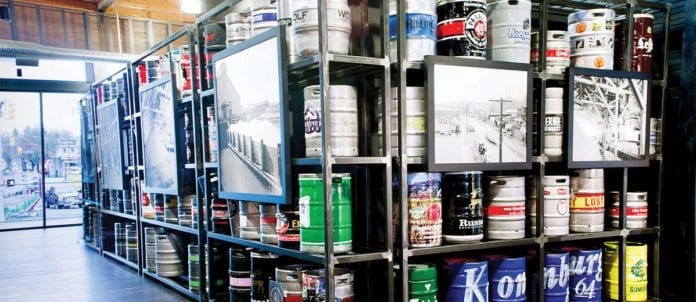Early this year, Restaurants Canada released its annual “Canadian Chef Survey” and the number-1 trend in the foodservice industry was hardly a surprise. Indeed, craft beer has taken the alcohol space by storm, becoming the fastest-growing category at the LCBO and raking in nearly $184-million in the past year.
The craft-beer trends ebb and flow as the season changes, but David Ort, author of The Canadian Craft Beer Cookbook, says there’s been a shift in drinking habits. Whereas high-ABV (alcohol by volume), hoppy IPAs (India pale ale) have been a dominant seller for years, a new bevvy is hogging the spotlight. “One of the trends coming up, especially for summertime drinking, is Pilsners,” he says. “They’re lagers that originated in Czech Republic and are usually lower-alcohol, mildly sweet with a crisp finish. They’re great for hot days because they go well alone or with food.”
Aside from pilsners, Rob Swiderski, a certified cicerone, has been following the growing popularity of sour beers. The owner/operator of Craft Beer Market, which operates locations in Calgary, Edmonton and Vancouver, offers 120 craft brews on tap, 50-per-cent of which are locally sourced. “There’s been such a big shift in the way people are thinking right now,” when it comes to seasonality, he says. So next to the typical summer best-sellers such as lagers, fruit-flavoured wheat ales and Belgian Witbier, the operator is noticing the slow emergence of sour beers. “They’re an acquired taste, but they’re great for food-pairing as well. They almost resemble a wine because of the acidity in them, so [they pair well with] anything salt-based, such as seafood, pork belly, cured meats and funky cheeses.” Craft Beer Market offers a series of rotating handles including the Sour Tower, which pours Lambic, Berliner Weisse or Flanders Red. Ort adds, “It’s acidic, tart and it’s not what you expect at all. It goes well with food and it’s refreshing — but difficult to make on a large scale.”
The competition for shelf space at local liquor outlets and The Beer Store has led some craft brewers to break into the foodservice industry. “I think the connection between craft beer and food is getting closer,” says Ort. “A brewpub will have a restaurant where you will go and eat their food and drink their beer and also has a bottle shelf where you can buy beer to take home.” It’s a model that’s been working for brewpubs such as Brewsters in Western Canada and Granite Brewery in Toronto for more than two decades. Guests can dine on casual fare and then pick up a growler or bottles to go. “The idea that breweries will own more of their chain of production and marketing will be an important one,” says Ort.
Volume 49, Number 4
Written By Jackie Sloat-Spencer


















